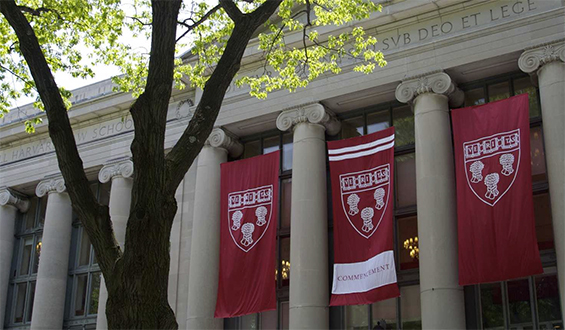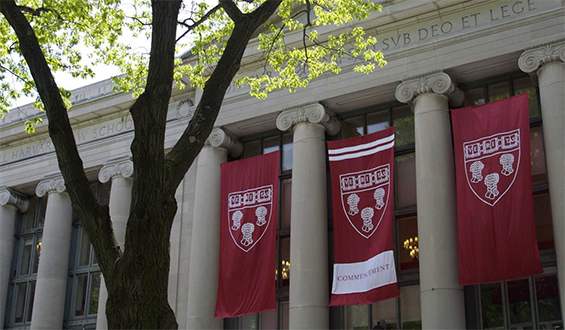
A number of students at Harvard University are pushing for a change to the seal used by the university’s law school, which they argue endorses a legacy of owning slaves. The seal is the family crest of the school’s founder, who owned slaves.
Founded in 1817, Harvard Law School is the second oldest law school in the nation. The estate of Isaac Royall, Jr. donated the land the school sits on, as well as the money used to pay for the first professor. Royall was a landowner in New England who owned slaves. To show their appreciation for the generous donation, the school used his family crest as their seal, which displays three sheaves of wheat. The seal is still in use at the school today, writes Blake Neff for The Daily Caller.
However, students and activists at the school are beginning to argue that the seal needs to be changed due to its ties to slavery. Launching a movement called “Royall Must Fall,” the group is making a push for the school to end its use of the seal, saying that it glorifies a man whose family owned over a dozen slaves and was responsible for the repression of a slave revolt, even going so far as to burn the leader of the revolt to death. Third-year Harvard law student A.J. Clayborne, a leader of the effort, called the use of the seal “racially insensitive.”
A similar effort at the University of Cape Town influenced the current movement. The Cape Town effort resulted in the removal of a statue of Cecil Rhodes.
“[Royall’s] family made their money from a sugar plantation in Antigua, and he and his father crushed a planned rebellion by allowing 77 people to be burned alive, including Hector, the family’s slave driver and leader of the revolt,” the movement’s Facebook page argues. “We ask our own administration to stand in solidarity with the protesters of South Africa, decolonize Harvard Law, and honor the enslaved people who actually founded this school.”
Around 20 students have joined the effort so far and are currently preparing to meet face-to-face with law school administrators with their formal demands.
The seal was adopted by Harvard Law in 1936 as part of the 300th anniversary celebration and is currently used throughout the school, from its website and letterhead to mugs and T-shirts.
This is not the first time that Royall’s role at the school has been put up for debate. When Elena Kagan was dean of the school between 2003 and 2009, she refused to use the Royall Chair, traditionally reserved for the dean of the law school. She instead chose a chair that had been named after civil rights lawyer and Harvard alum Charles Hamilton Houston, writes Jacob Gershman for The Wall Street Journal. Martha Minnow, her successor, refused the use of the chair as well.




